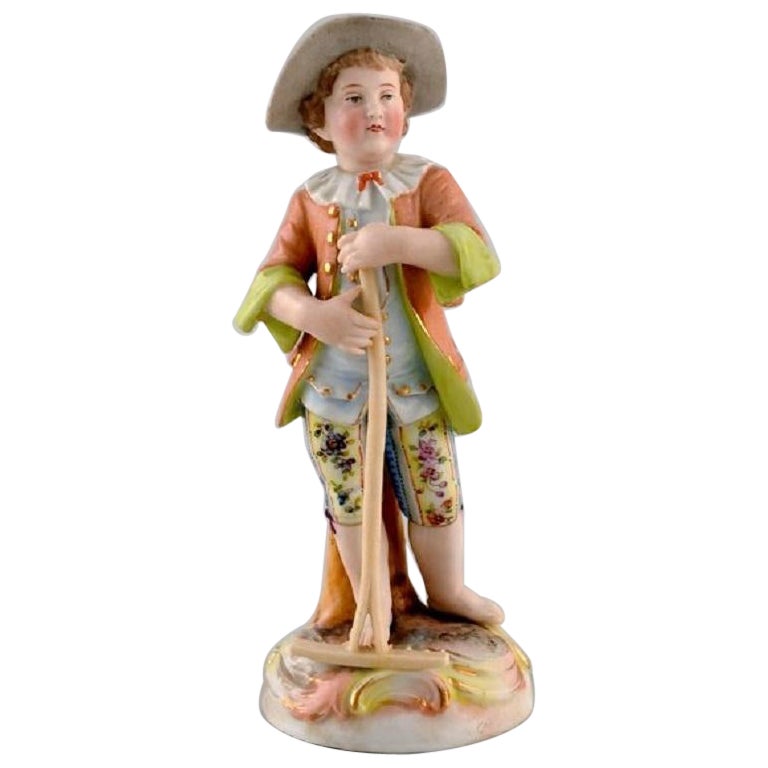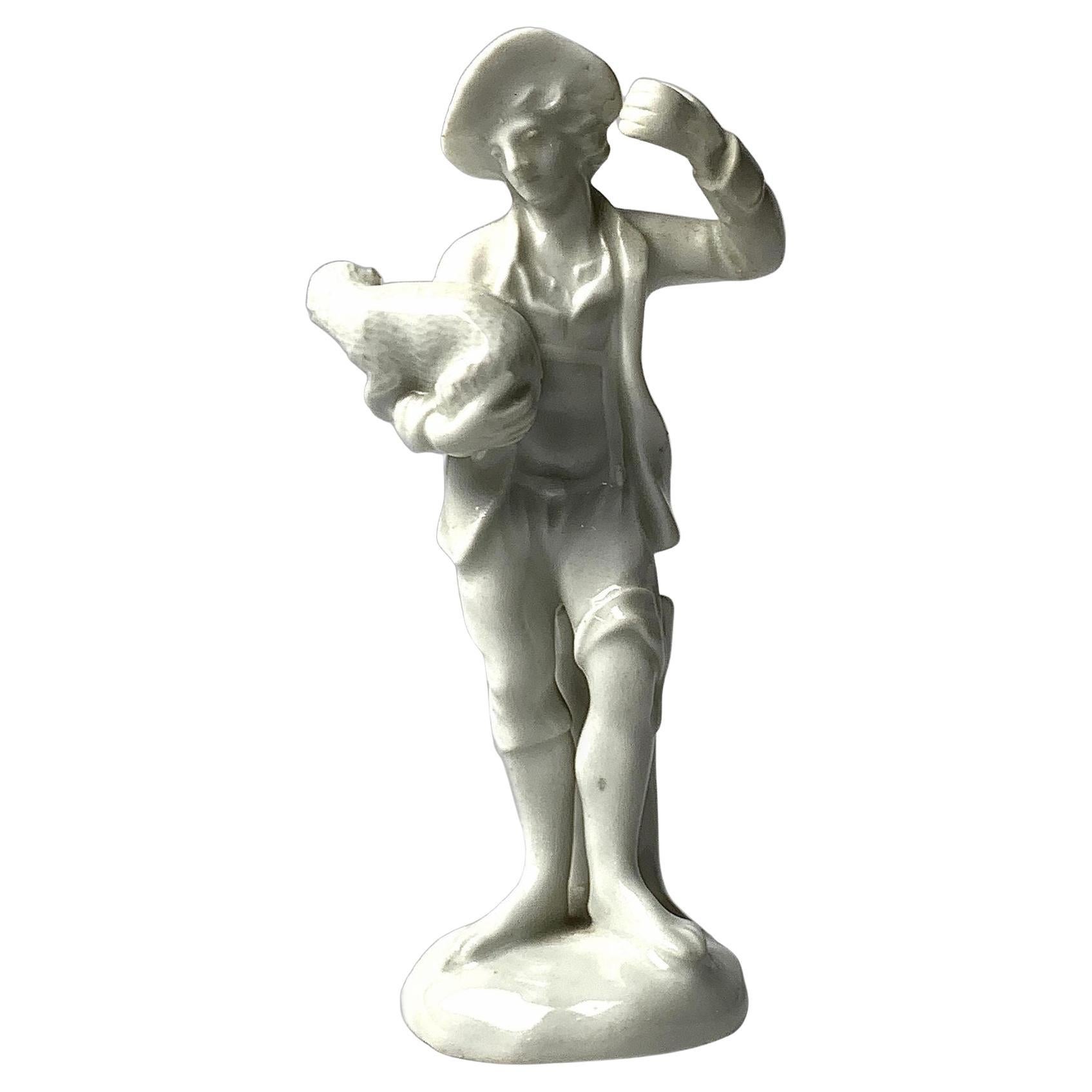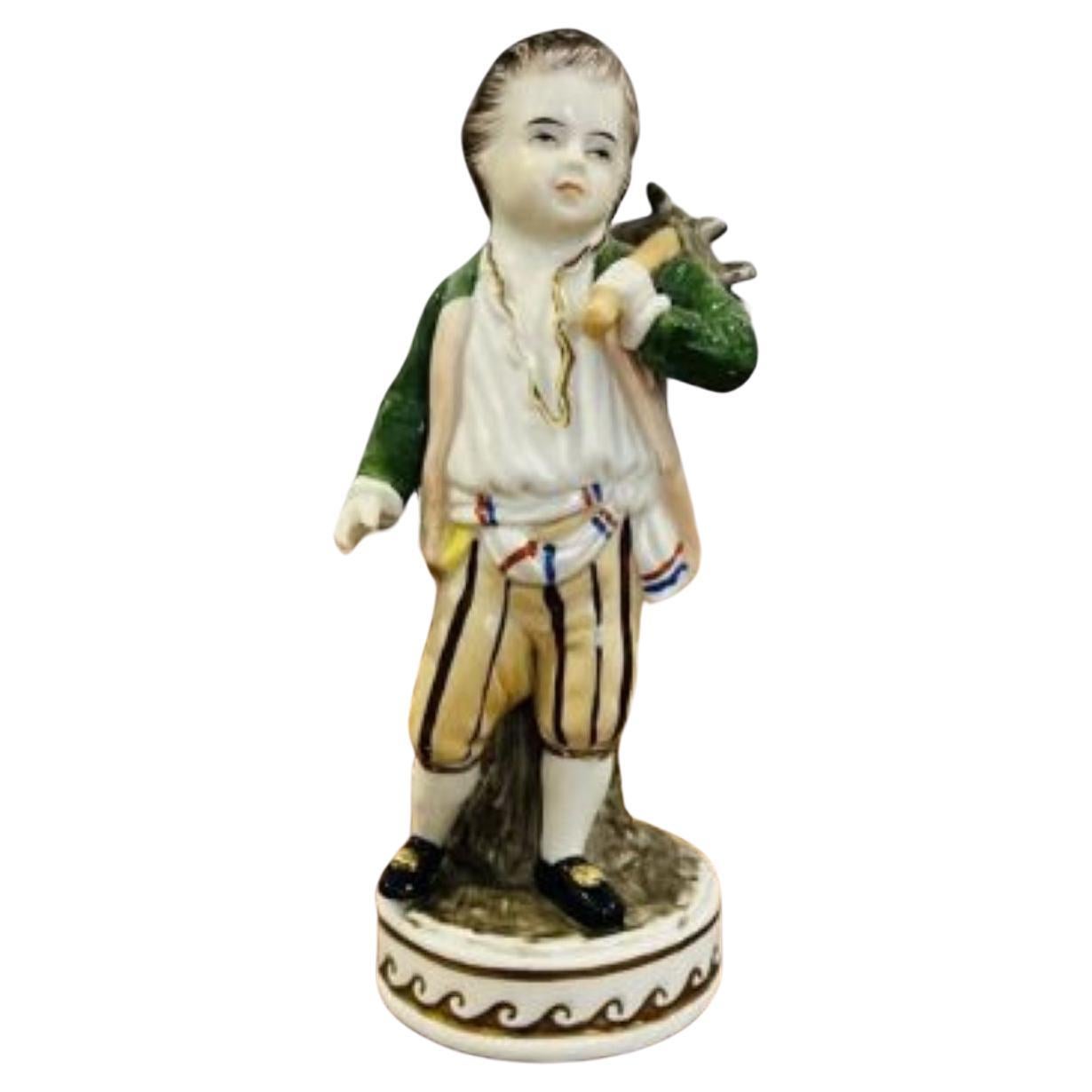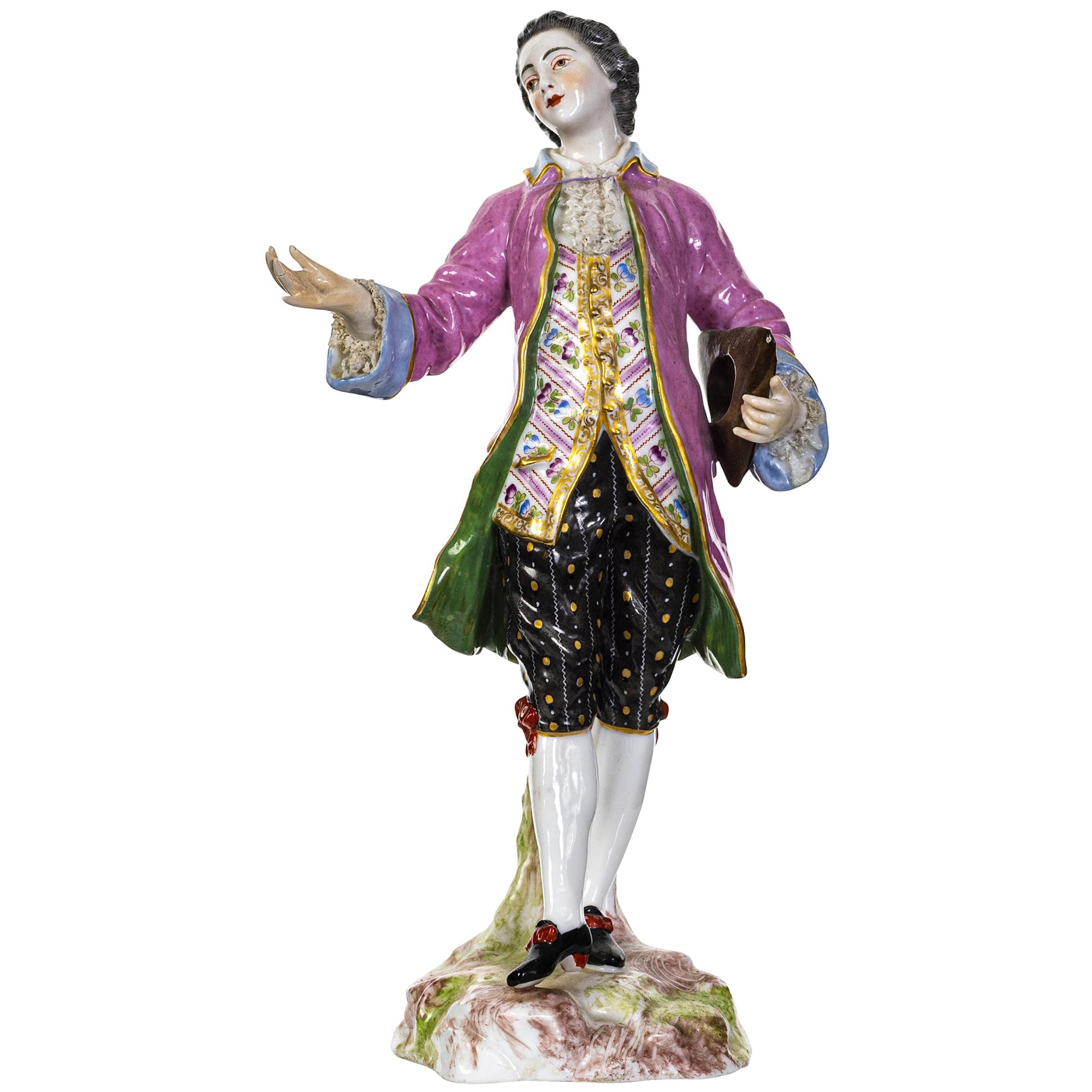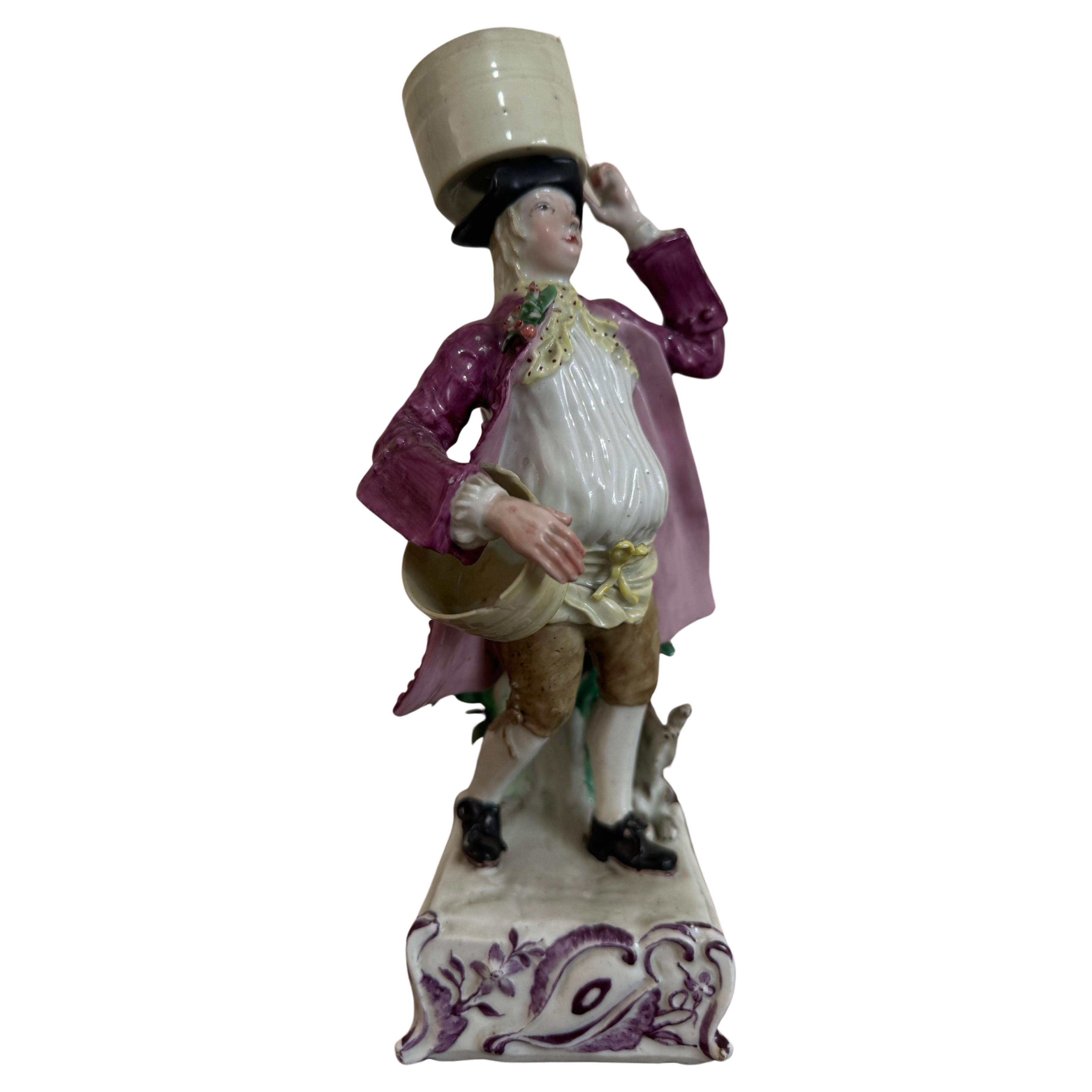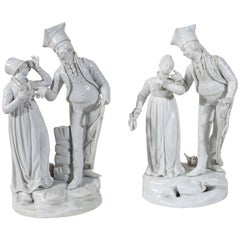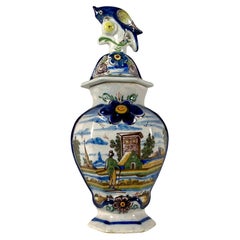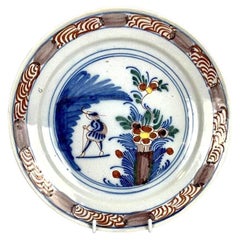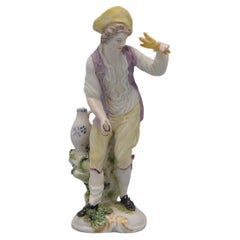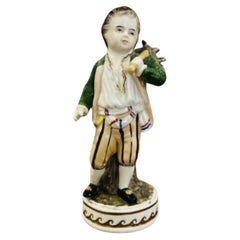Items Similar to 18th Century French Creamware Figure by Cyfflé at Saint Clément, Circa 1770
Want more images or videos?
Request additional images or videos from the seller
1 of 7
18th Century French Creamware Figure by Cyfflé at Saint Clément, Circa 1770
$2,300
£1,717.99
€1,991.74
CA$3,193.49
A$3,579.49
CHF 1,863.74
MX$43,707.15
NOK 23,662.69
SEK 22,430.11
DKK 14,860.50
Shipping
Retrieving quote...The 1stDibs Promise:
Authenticity Guarantee,
Money-Back Guarantee,
24-Hour Cancellation
About the Item
Queen Marie-Antoinette appointed Saint-Clément as a Royal Supplier for her Petit Trianon at Versailles.
Here is an 18th-century Saint-Clément hand-painted creamware figure of a young man.
Modeled by Paul Louis Cyfflé* at Saint- Clément in France circa 1775, the figure exhibits outstanding detail,
such as the young man's beautiful face, lifelike clothes, and posture.
He carries a little lamb and a pair of birds to market.
The sculpting of the clothes is so lifelike that we can almost feel the fabrics draping on his body.
Complementing the excellent modeling, the hand-painted colors are exquisite!
This young man is part of Cyfflé's first series of figures in which he presented statuettes of tradesmen.
Dimensions: 8.5" height x 4.25" wide x 3.5" deep
Condition: Excellent
Price: $ 2,300
Provenance: From the collection of William and Marilyn (Milton) Simpson: Marilyn Simpson was a grandchild of John D. Rockefeller Jr.
The paper label on the underside of the figure states: "Saint Clément by-Cyffle c.1775 Parke-Bernet March 1957."
Background of the Saint-Clement factory: The French faience fine (French creamware) factory of Saint-Clément, located 7.4 miles from Lunéville, was established by Jacques Chambrette in 1758 and closed in 1779. The factory produced beautifully made prestigious faience and faience fine (French creamware) objects for the French aristocracy.
The French ceramics specialist Edmond Marchal (1833-1916) appreciated the models of Cyfflé.
He noted: "He captures nature on the spot - a popular realism - a talent full of fire - a deep observation - the purity of the forms is combined with the finesse of detail."
Cyfflé's fame was acquired because he produced high-quality objects.
His faience fine statuettes were masterpieces of fine sculpture.
In Cyfflé's first series of figures, some of the figures are the hawker, the chimney sweeper, the boilermaker, the repairer of porcelain earthenware, the street singer, the fishmonger, and the butcher.
These were the tradesmen who offered their products or services with loud cries in the streets and markets.
The figures radiated an attractive freshness that completely distinguished them from porcelain objects of the time, which had a much more solemn appearance. The aristocratic clients of Saint-Clément much appreciated them.
- Creator:Saint-Clément (Maker)
- Dimensions:Height: 8.5 in (21.59 cm)Width: 4.25 in (10.8 cm)Depth: 3.5 in (8.89 cm)
- Style:Rococo (Of the Period)
- Materials and Techniques:
- Place of Origin:
- Period:
- Date of Manufacture:Circa 1775
- Condition:
- Seller Location:Katonah, NY
- Reference Number:Seller: SKU000010111stDibs: LU866540310972
About the Seller
5.0
Recognized Seller
These prestigious sellers are industry leaders and represent the highest echelon for item quality and design.
Platinum Seller
Premium sellers with a 4.7+ rating and 24-hour response times
Established in 1962
1stDibs seller since 2009
485 sales on 1stDibs
Typical response time: <1 hour
- ShippingRetrieving quote...Shipping from: Katonah, NY
- Return Policy
Authenticity Guarantee
In the unlikely event there’s an issue with an item’s authenticity, contact us within 1 year for a full refund. DetailsMoney-Back Guarantee
If your item is not as described, is damaged in transit, or does not arrive, contact us within 7 days for a full refund. Details24-Hour Cancellation
You have a 24-hour grace period in which to reconsider your purchase, with no questions asked.Vetted Professional Sellers
Our world-class sellers must adhere to strict standards for service and quality, maintaining the integrity of our listings.Price-Match Guarantee
If you find that a seller listed the same item for a lower price elsewhere, we’ll match it.Trusted Global Delivery
Our best-in-class carrier network provides specialized shipping options worldwide, including custom delivery.More From This Seller
View AllAntique White Porcelain Court Figurine Ludwigsburg Germany Circa 1765
By Ludwigsburg Porcelain Manufactory
Located in Katonah, NY
An antique white porcelain court figurine made by Ludwigsburg Porcelain circa 1765.
This unpainted figure represents a young man in 18th-century dress holding a lamb under one arm an...
Category
Antique Mid-18th Century German Rococo Figurative Sculptures
Materials
Porcelain
Pair Antique Italian Porcelain Figures by Le Nove Late 18th Century
By Carlo Ginori
Located in Katonah, NY
The renowned Le Nove Manufactory made this exceptional pair of 18th-century Italian porcelain courting couples.
The figures embody the grace and romanticism of...
Category
Antique Late 18th Century Italian Rococo Porcelain
Materials
Porcelain
18th Century Dutch Delft Jar Hand-Painted by De Bloempot
By Delft
Located in Katonah, NY
This lovely 18th-century Delft jar was made in the factory of De Bloempot in Delft, The Netherlands, circa 1780.
The design features a gentleman with a top hat and a walking stick standing at the side of a river.
He looks across at the buildings of a Dutch village.
Above and below, the scene is framed by two large molded flowers.
The cover has a traditional Dutch Delft bird...
Category
Antique Late 18th Century Delft and Faience
Materials
Delft
18th Century Dutch Delft Plate with Walking Man Scene, Circa 1780
By Delft
Located in Katonah, NY
This hand-painted plate, made in the Netherlands around 1780, features the "Walking Man," a decorative motif commonly found in 18th-century Dutch Delftware.
The image depicts a man i...
Category
Antique Late 18th Century Dutch Decorative Dishes and Vide-Poche
Materials
Delft
Dr Wall First Period Worcester Sugar Box England Circa 1775
By 1st Period Worcester Dr. Wall
Located in Katonah, NY
This 18th-century First Period Worcester Porcelain sugar box was hand painted featuring beautiful swags painted with green leaves, purple berries, and two-tone blue and yellow apples.
Each swag is tied with a purple ribbon in an elegant bow. Green leaves and two-tone plums hang from each ribbon.
The cover finial is crafted as a budding rose painted in gorgeous pinkish purple and yellow with two green leaves.
The sugar box's border and cover are both adorned with a band of underglaze blue and a chain of golden ribbons
and are gently lobed, which adds visual excitement as light plays over the curved surfaces.
Made in England circa 1775, this sugar box is a gem!
Dimensions: 5" tall x 4.5" diameter
Condition: Excellent
Marks: On the underside is the Worcester First Period crescent in underglaze blue (see last image).
Early Worcester Porcelain marks are rarely seen—a blue crescent mark (seen here) dates pieces back to the 'First' or 'Dr Wall...
Category
Antique Late 18th Century English Rococo Porcelain
Materials
Porcelain
Large Blue and White Delft Charger 18th Century Made circa 1780
Located in Katonah, NY
We are pleased to offer this Antique blue and white Delft charger with a well-painted landscape showing a house and trees. The decoration is crisp. The scene is framed by an attracti...
Category
Antique 18th Century Dutch Rococo Delft and Faience
Materials
Delft
You May Also Like
Ludwigsburg - figurine of a gardener, late 18th century
By Ludwigsburg Porcelain Manufactory
Located in DELFT, NL
Gardener figure of a young man holding ears of wheat and a sickle in his hands.
model by Johann Christoph Haselmeyer or Johann Jacob Louis.
Underglaze blue CC monogram on the back ...
Category
Antique Late 18th Century German Rococo Porcelain
Materials
Porcelain
German Porcelain Figurine, Young Gardener, 20th Century
Located in København, Copenhagen
German porcelain figurine. Young gardener. 20th century.
Measures: 14.6 x 6 cm.
In very good condition. Minimal chips on the rake.
Stamped.
Category
20th Century German Rococo Revival Porcelain
Materials
Porcelain
$160 Sale Price
20% Off
Antique porcelain continental figure
Located in Ipswich, GB
Antique porcelain continental figure having an antique porcelain continental figure of a child carrying a bag in wonderful coloured period clothing i...
Category
Early 20th Century Porcelain
Materials
Porcelain
Meissen Porcelain Figure of a Gentleman, circa 1745
By Meissen Porcelain
Located in West Palm Beach, FL
A Meissen Porcelain figure of a Gentleman, circa 1745
model standing, blue crossed sword mark to back of base
Measures: 24cm., 9 1/4 in. high.
Category
20th Century Figurative Sculptures
Materials
Porcelain
Longton Hall Figure of Milkman, circa 1755
By Longton Hall
Located in Basildon, GB
Longton Hall Figure of Milkman, circa 1755, with two pails, one on his head the other by his side, wearing a black tricorn hat, white shirt, yellow and puce spotted neckerchief, puce...
Category
Antique 1750s English Rococo Porcelain
Materials
Porcelain
Carl Thieme, Dresden Hand Painted & Gilded Porcelain Figure, Germany, C. 1910
By Carl Thieme
Located in Chatham, ON
CARL THIEME (Factory / Manufacturer) - Potschappel (Village / Location) - Antique Dresden hand painted, decorated and gilded porcelain figure of a...
Category
Early 20th Century German Louis XVI Porcelain
Materials
Porcelain
$906 Sale Price
30% Off
More Ways To Browse
Marie Versailles
Marilyn Glass
Versaille Porcelain
Versailles Porcelain
18th Century Creamware
Royal Antoinette
Porcelain Marie Antoinette
Marie Antoinette Silver
Painted Creamware
Luneville Faience
French Faience Luneville
French Creamware
Petit Trianon
Pair Porcelain Bird Figures
Royal Delft Porcelain
Trianon Silver
18th C French Faience
Solemn Ceramics

